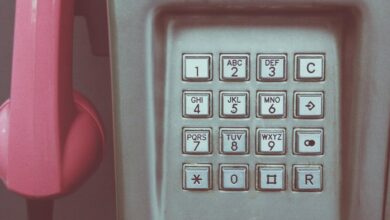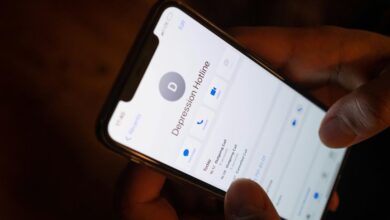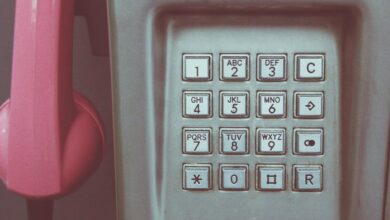Check Who Called From These Numbers: 2042897277, 2042897313, 2042897376, 2042897546, 2044803976, 2044805589

Calls from the numbers 2042897277, 2042897313, 2042897376, 2042897546, 2044803976, and 2044805589 warrant scrutiny due to their association with the Manitoba area code 204. This code is frequently linked to telemarketing efforts and local businesses. Understanding the nature of these calls is crucial. What types of outreach are common? What measures can be taken to discern legitimacy? These considerations are essential for managing potential disruptions.
Understanding the Area Code: 204
The area code 204 serves as a critical identifier for telephone numbers originating in Manitoba, Canada.
Its area code significance lies in facilitating efficient communication across a defined geographical distribution. This system allows residents and businesses to connect seamlessly while providing insight into the regional identity of callers.
Understanding this code enhances awareness of local telecommunications and fosters a sense of community.
Identifying Common Callers From These Numbers
In the realm of telecommunications, understanding the common callers associated with specific numbers can provide valuable insights for individuals and businesses alike.
A comprehensive number lookup reveals:
- Telemarketing firms
- Service providers
- Government agencies
- Local businesses
Analyzing caller reputation aids in discerning legitimate calls from potential nuisances, ultimately empowering users to make informed decisions regarding their communication interactions.
Potential Scams and Telemarketing Trends
The landscape of telemarketing is characterized by evolving strategies that often blur the lines between legitimate outreach and potential scams.
Identifying patterns in these calls can aid consumers in recognizing deceptive practices, enabling them to report suspicious activity effectively.
Analyzing these trends is essential for understanding the broader implications of telemarketing on consumer trust and safety.
Common Telemarketing Strategies
Although many telemarketing strategies aim to generate leads and maximize sales, a significant number also exploit consumer vulnerabilities, raising concerns about potential scams.
Common telemarketing tactics include:
- High-pressure sales techniques
- Fake urgency to prompt quick decisions
- Misleading offers that seem too good to be true
- Use of personal data to build trust in phone sales
These methods often blur ethical lines.
Identifying Scam Patterns
How can consumers effectively identify patterns indicative of telemarketing scams?
Employing scam detection methods, individuals can analyze the frequency and nature of calls. Common red flags include unsolicited offers and pressure tactics.
Caller verification techniques, such as cross-referencing numbers online, further enhance consumer awareness.
Reporting Suspicious Calls
Reporting suspicious calls is crucial for combating potential scams and understanding telemarketing trends. Recognizing these calls helps individuals protect their privacy and autonomy.
Key aspects include:
- Identifying suspicious callers
- Analyzing common scam tactics
- Documenting call details
- Reporting to authorities
Awareness of these elements empowers individuals to take action against fraudulent activities, fostering a more secure communication environment.
How to Block Unwanted Calls
As unwanted calls continue to disrupt daily life, implementing effective blocking strategies becomes essential for maintaining privacy and reducing annoyance. Call blocking techniques can significantly deter unwanted callers. Below is a comparison of methods available for blocking unwanted calls:
| Method | Effectiveness | Ease of Use |
|---|---|---|
| Built-in Features | High | Moderate |
| Third-party Apps | Very High | Easy |
| Carrier Services | High | Moderate |
Tools and Resources for Caller Identification
Identifying unknown callers has become increasingly important in a world filled with spam and fraudulent calls.
Effective tools and resources to enhance caller ID capabilities include:
- Online directories for reverse phone lookups
- Caller ID apps for smartphones
- Community reporting platforms
- Telecommunication provider services
These resources empower individuals to reclaim their privacy and make informed decisions about answering calls.
Reporting Suspicious Numbers to Authorities
The identification of spam calls is critical for consumer protection and public safety.
The process of reporting these suspicious numbers involves specific steps that ensure proper documentation and action by authorities.
Understanding both the nature of these calls and the reporting mechanisms can enhance the effectiveness of response efforts.
Identifying Spam Calls
While many individuals receive frequent unsolicited calls, distinguishing between legitimate communications and spam can be challenging.
Effective call screening and adherence to phone etiquette are essential. To identify spam calls, consider the following:
- Unknown numbers
- Robotic voice messages
- High-pressure tactics
- Requests for personal information
Reporting Process Steps
When individuals suspect that a number is linked to spam or fraudulent activity, reporting it to the appropriate authorities is crucial for mitigating future risks.
Following established reporting guidelines, individuals should document relevant call details, including timestamps and caller behavior.
This comprehensive call documentation aids authorities in assessing patterns and implementing necessary actions, fostering a safer communication environment for all users seeking to protect their freedoms.
Conclusion
In conclusion, callers from the numbers 2042897277, 2042897313, 2042897376, 2042897546, 2044803976, and 2044805589 warrant careful scrutiny due to their association with telemarketing and potential scams. As individuals navigate this digital age, reminiscent of a time when rotary phones dominated communication, leveraging caller ID apps and online resources becomes crucial for discerning legitimate outreach. Proactively blocking unwanted calls and reporting suspicious activity aids in safeguarding personal information and mitigating the impact of nuisance calls.




